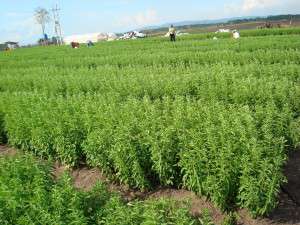France approves high Reb A stevia sweeteners
By Mohammadali Ardehali Professional Member of IFT

The French government has approved the use of stevia sweeteners with 97 per cent purity rebaudioside A (Reb A), officially opening up the first EU market for products containing the much-anticipated ingredient.
While full EU approval for stevia sweeteners is still dependent on a scientific opinion from the European Food Safety Authority (EFSA), France has taken advantage of window that allows individual member states to approve ingredients for a limited two year period.
The approval, published yesterday in France’s official journal, has been hotly anticipated by the industry since AFSSA, the French food agency, issued a positive safety opinion earlier this year.
The application for France was made by Greensweet. General manager Joël Perret told FoodNavigator.com: “This is very good news. It is the first opening for this type of ingredient in the EU market”.
The global sweetener market for food use was valued at US$1.83bn in 2007 by Leatherhead Food International. The intense sweeteners market is dominated by aspartame and, to a lesser extent, sucralose. However interest in food ingredients from natural sources has led some to consider that the stevia plant could provide ‘the holy grail’ of sweeteners.
Reb A is one of the major steviol glycosides found in the leaf of the Stevia rebaudiana plant. It is 300 times sweeter than sugar but has no calories, making it an attractive option for manufacturers catering to the market for foods and beverages with reduced, low or no sugar.
Activity anticipated
Based on enquiries so far Perret said there is the potential for hundreds of tonnes of Reb A to be used in products marketed in France in the coming months.
Manufacturers have already done considerable work on testing out potential uses. Now they will turn their attention to marketing and launches – but the first launches “could be very fast in some cases”.
Angus Flood, head of international marketing at Reb A supplier PureCircle, agreed; he said early adopters could have products on the market by the end of 2009.
According to Flood much of the early activity looks to be in the reformulation of products away from other sweeteners. Such a strategy would be a less risky way to enter the market than by launching a brand new product.
Not all steviol glycosides
Despite the excitement of the approval of Reb A in France, the news is bitter-sweet for Perret.
His original application to the French authorities was for stevia extracts with 95 per cent purity of steviol glycosides – not just Reb A. The Joint WHO/FAO Expert Committee on Food Additives (JECFA) gave a positive view of sweeteners with this profile in June 2008.
But AFSSA decided to consider only Reb A , “for unknown reasons” according to Perret, and to study the broader steviol glycoside profile separately.
“I am happy, because this is the end for me of a very long task. But a bit sad that we did not reach the final objective,” he said.
GreenSweet does offer both Reb A and steviol glycosides in its portfolio, so the company is still able to make its move in the French marketplace.
But Perret is not positive that the French authorities will pursue approval of steviol glycosides to the JECFA specification, as under the two-year window this would have to be secured by 31 December 2009.
Rather, France will most likely wait, like the rest of the EU, for steviol glycosides to pass by the conventional route through EFSA and the European Commission.
EFSA could give its opinion as early as March 2010. Depending on how long it then takes the Commission to put together the legal text, EU approval could come in 2010 or later.
By: Mohammadali Ardehali
09122237381